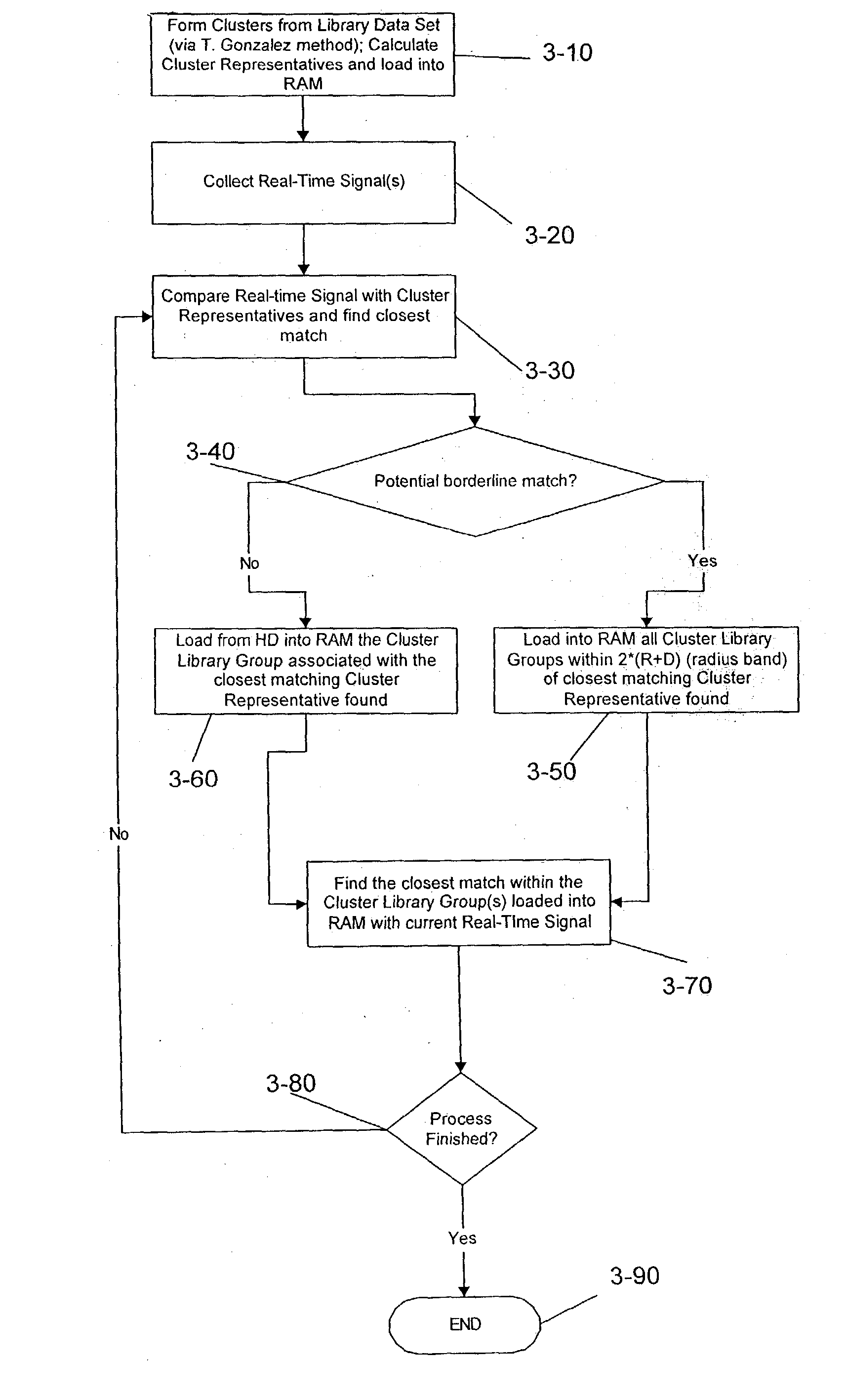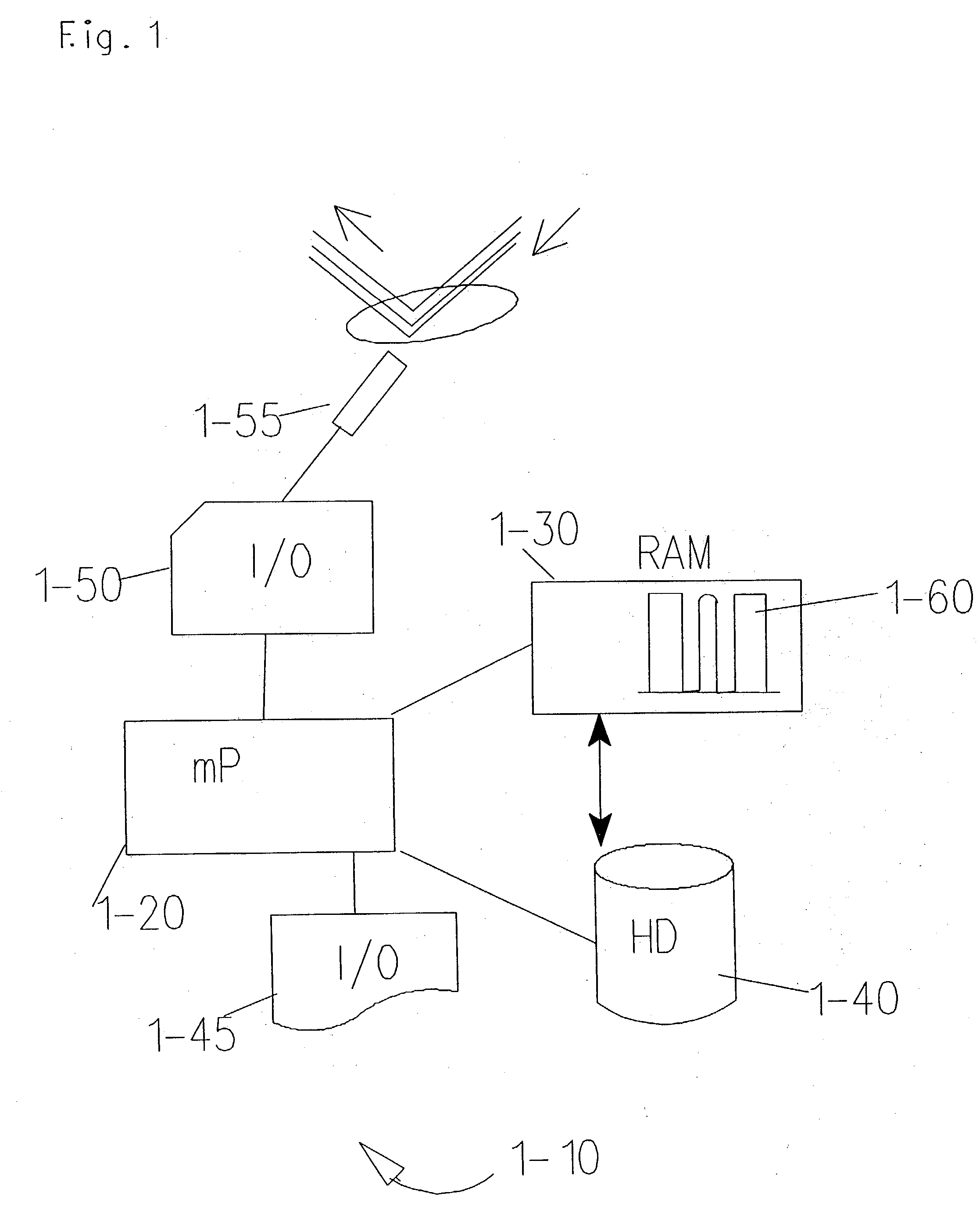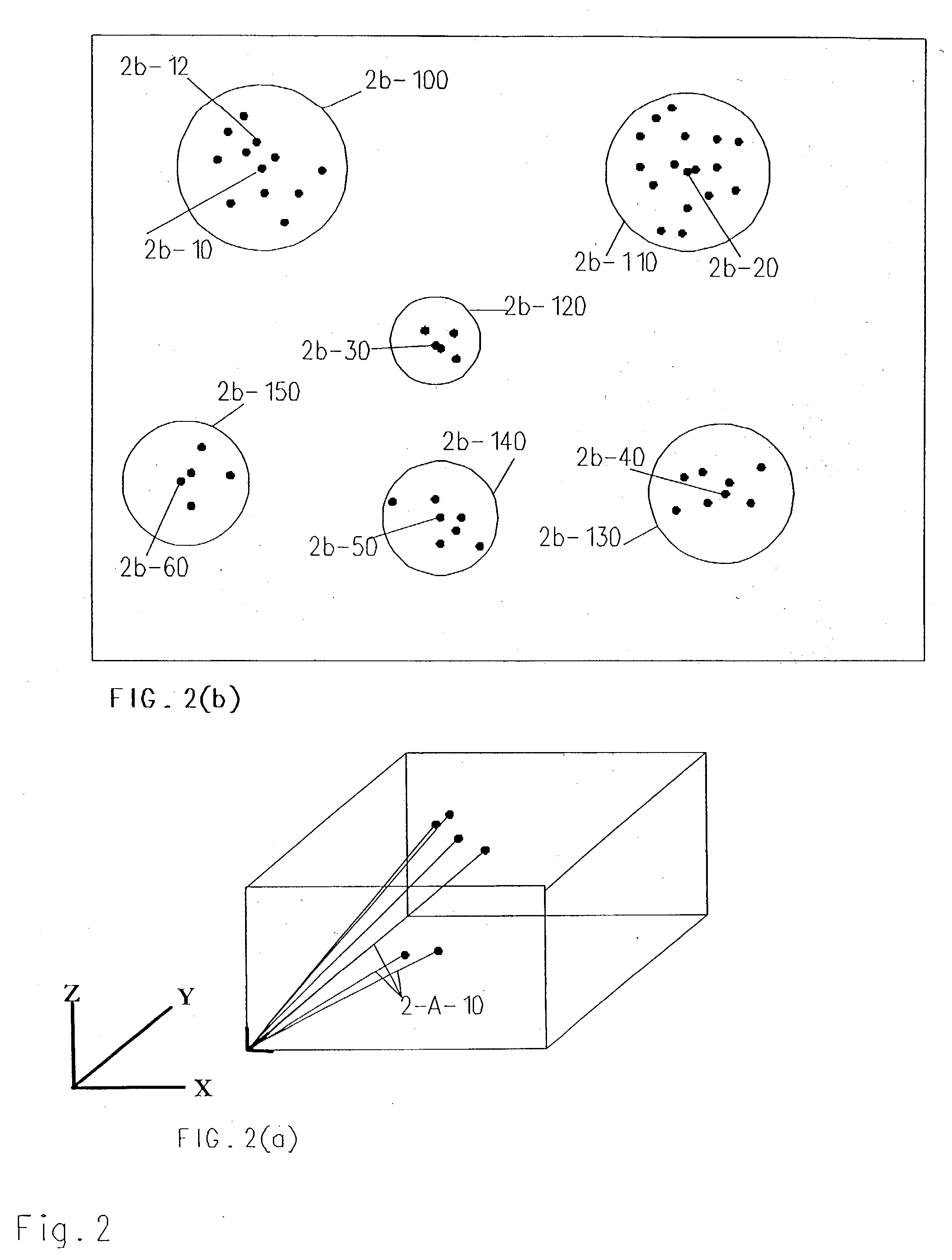Clustering for data compression
a data compression and clustering technology, applied in the field of clustering for data compression, can solve the problems of a large amount of data produced that cannot be readily used by a chip manufacturer to control processes in real-time, and achieve the effect of avoiding excessive disk thrashing
- Summary
- Abstract
- Description
- Claims
- Application Information
AI Technical Summary
Benefits of technology
Problems solved by technology
Method used
Image
Examples
Embodiment Construction
)
[0015] FIG. 1 is block diagram view for the profileometry system implementing the present invention. A computer system 1-10 having a processor 1-20, running the software program of the present-invention, cooperates with primary memory (i.e., RAM) 1-30, secondary memory (i.e., a hard drive) 1-40 and a plurality of I / O devices 1-45, such as keyboard, mouse and monitor, as well as I / O device 1-50 connected to one or more instruments 1-55 that are used in profileometry, such as an ellipsometer, scatterometer, atomic force microscope (AFM), scanning electron microscope (SEM), transmission electron microscope (TEM), spectrometer (SEM-EDX), or the like, which preferably are real-time measuring instruments, such as an ellipsometer and scatterometer, that collect incoming data, such as scattered or reflected wavelength, in real-time. The data is correlated with library data to ascertain features of interest in die fabrication, such as grain size, profile contours, critical dimension (CD), f...
PUM
| Property | Measurement | Unit |
|---|---|---|
| real-time | aaaaa | aaaaa |
| physical and optical properties | aaaaa | aaaaa |
| physical | aaaaa | aaaaa |
Abstract
Description
Claims
Application Information
 Login to View More
Login to View More - R&D
- Intellectual Property
- Life Sciences
- Materials
- Tech Scout
- Unparalleled Data Quality
- Higher Quality Content
- 60% Fewer Hallucinations
Browse by: Latest US Patents, China's latest patents, Technical Efficacy Thesaurus, Application Domain, Technology Topic, Popular Technical Reports.
© 2025 PatSnap. All rights reserved.Legal|Privacy policy|Modern Slavery Act Transparency Statement|Sitemap|About US| Contact US: help@patsnap.com



